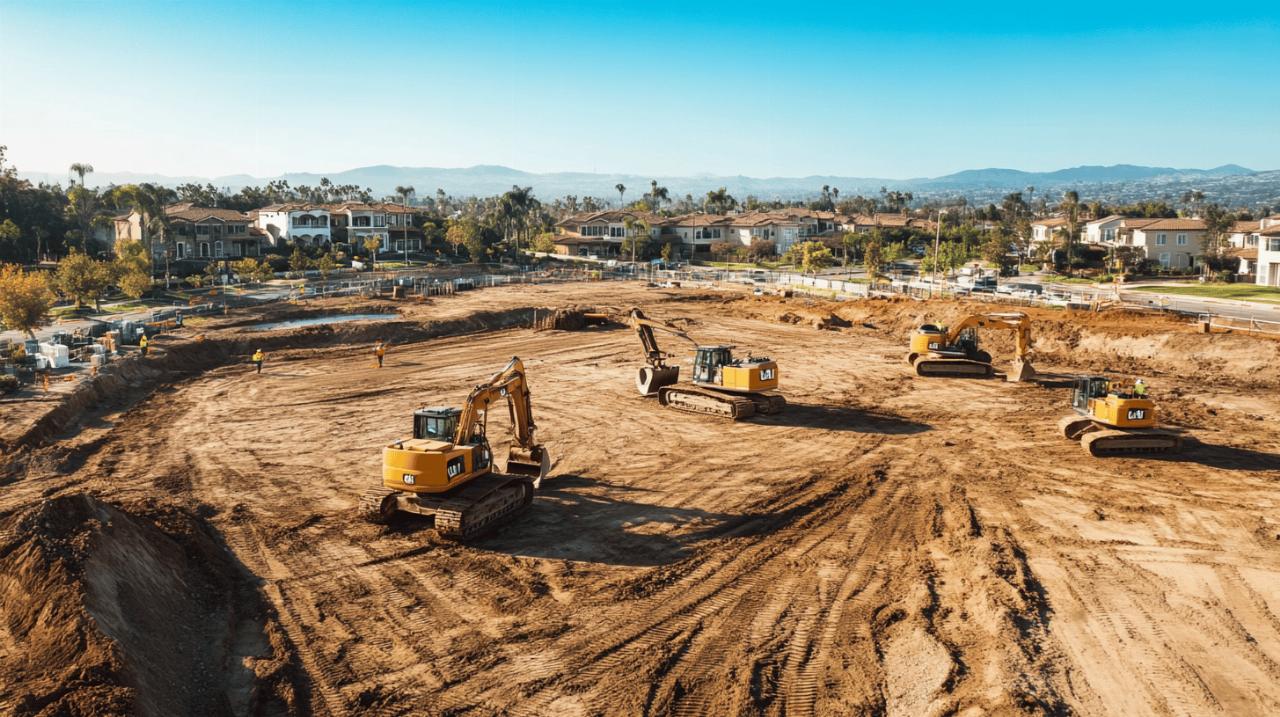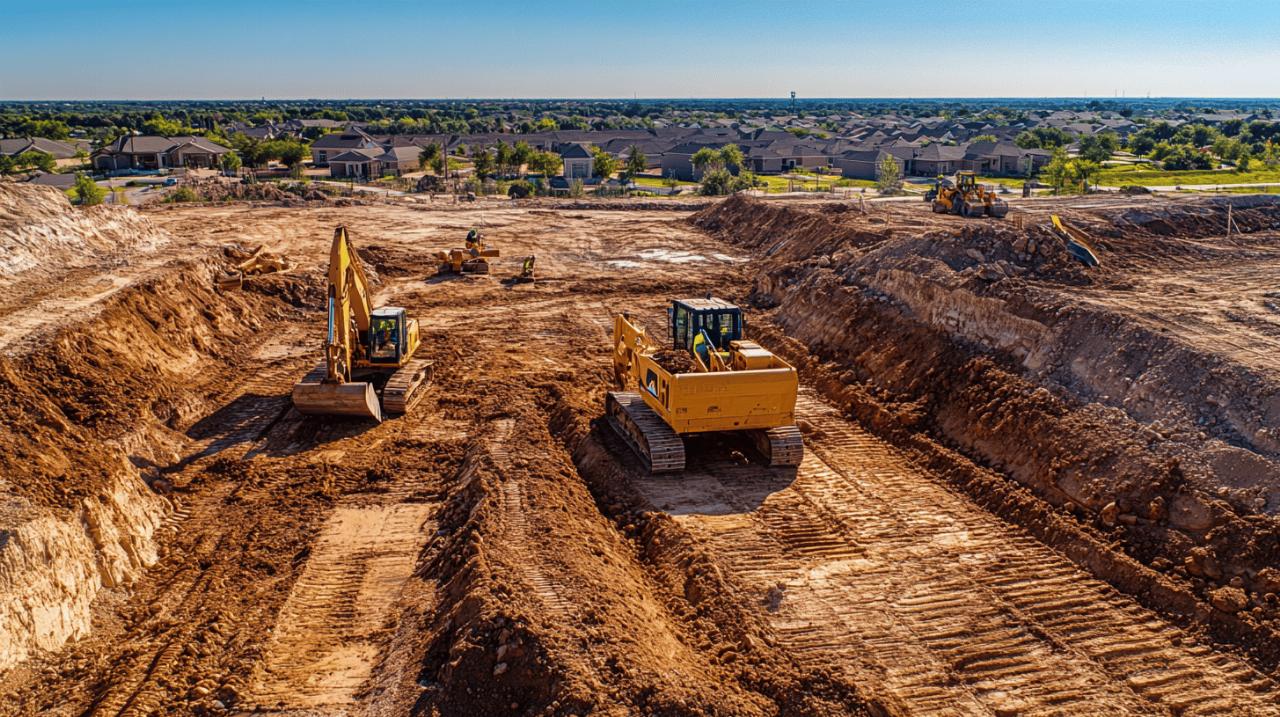In the United Kingdom, transforming raw plots of earth into sturdy foundations for homes, offices, and commercial spaces demands precise ground preparation. The process of land levelling stands as a cornerstone of construction success, ensuring that every structure rests upon a stable, well-drained platform. From rolling countryside developments to urban regeneration projects across Britain, expert levelling techniques have turned challenging sites into celebrated success stories.
Understanding the Fundamentals: Why Land Levelling Matters in Construction
The Critical Role of Proper Ground Preparation in Building Stability
The foundation of any successful construction project begins long before the first brick is laid. Ground preparation serves as the invisible backbone that determines whether a building will stand firm for decades or develop troubling structural issues within years. When architects and engineers assess a site, they recognise that uneven terrain poses significant risks to long-term stability. A surface that appears merely irregular to the untrained eye can translate into differential settling, where parts of a structure sink at different rates, causing cracks in walls and compromising the entire building envelope.
Proper levelling creates a uniform platform that distributes the weight of a structure evenly across its footprint. This uniformity proves particularly crucial in the United Kingdom, where soil composition varies dramatically from the clay-heavy grounds of the southeast to the rocky terrains of northern regions. Without adequate preparation, builders face the prospect of costly remediation work, emergency repairs, and potential safety hazards. The initial investment in thorough ground preparation pays dividends throughout the lifetime of any construction project, whether residential or commercial in nature.
Drainage Solutions and Prevention of Future Structural Issues
Water management emerges as one of the most critical considerations during the levelling process. The British climate, characterised by frequent rainfall and occasional flooding, demands that every construction site includes robust drainage provisions. When ground remains improperly levelled, water accumulates in low spots, creating saturated zones that weaken soil integrity and promote erosion. Over time, these waterlogged areas can undermine foundations, leading to subsidence and structural instability.
Effective land levelling incorporates subtle gradients that direct surface water away from buildings and toward designated drainage channels. In many cases, professionals install French drains or similar systems to manage groundwater and prevent moisture from compromising foundations. The practice of addressing drainage during the initial earthworks phase rather than as an afterthought separates successful projects from those plagued by dampness, mould growth, and long-term deterioration. British building regulations recognise these imperatives, requiring comprehensive water management plans that begin with properly graded terrain.
Techniques and Equipment: From Hand Tools to Heavy Machinery
Surveying methods: traditional equipment versus modern gps technology
Before any soil moves, construction teams must understand the existing topography in precise detail. Traditional surveying employs spirit levels, measuring tapes, and theodolites to map elevation changes across a site. These methods, whilst reliable, require significant time and manual calculation to establish accurate grading plans. Surveyors establish reference points using wooden stakes and string lines, creating a grid that guides subsequent earthworks.
Modern GPS technology has revolutionised site assessment, allowing teams to generate detailed three-dimensional maps within hours rather than days. Satellite-guided systems provide centimetre-level accuracy, identifying high spots requiring excavation and low areas needing fill material. This technological advancement proves particularly valuable on large commercial sites where even small measurement errors can multiply across vast areas. The data captured during GPS surveys feeds directly into machine control systems, enabling operators to execute grading plans with unprecedented precision. British construction firms increasingly adopt these technologies, recognising that the initial investment yields substantial savings through reduced rework and faster project completion.
Earthworks process: soil movement, compaction, and grade requirements
Once surveying establishes the existing conditions and desired final grades, the earthworks phase begins. For modest residential projects, hand tools including shovels, rakes, and pickaxes may suffice, particularly when dealing with limited square footage or restricted site access. However, most construction projects demand mechanical assistance. Excavators remove soil from elevated areas, whilst bulldozers spread material across the site. Graders then fine-tune the surface, creating the smooth, uniform platform that foundations require.
The cut and fill method represents the most economical approach, reusing soil from high areas to fill depressions rather than importing material. This technique reduces transportation costs and environmental impact whilst maintaining the site's overall soil balance. After moving earth to achieve the desired contours, teams must compact the ground thoroughly. Compaction eliminates air pockets that would otherwise allow settling after construction begins. Operators use specialised rollers or tamping equipment, making multiple passes until the soil reaches specified density levels. British standards require compaction testing to verify that ground preparation meets structural engineering specifications before foundation work commences.
Planning your project: costs, contractors, and quality assurance
Breaking down land levelling costs: what factors influence your budget
 The financial outlay for land levelling varies considerably based on site characteristics and project scope. Small residential plots with minimal elevation changes might require only a few thousand pounds, whilst extensive commercial developments can command budgets exceeding six figures. Several key factors determine final costs, beginning with the volume of soil requiring movement. Sites with dramatic elevation changes demand more machine hours and potentially the import or export of material, significantly increasing expenses.
The financial outlay for land levelling varies considerably based on site characteristics and project scope. Small residential plots with minimal elevation changes might require only a few thousand pounds, whilst extensive commercial developments can command budgets exceeding six figures. Several key factors determine final costs, beginning with the volume of soil requiring movement. Sites with dramatic elevation changes demand more machine hours and potentially the import or export of material, significantly increasing expenses.
Soil composition plays an equally important role in budget calculations. Clay-heavy ground, common across much of lowland Britain, resists easy excavation and compaction compared to sandy or loamy soils. Rocky terrain may require specialised equipment or even blasting, adding substantial costs. Site access presents another variable, as restricted entry points necessitate smaller machinery that works more slowly or hand labour that proves more expensive per cubic metre. Drainage infrastructure, retaining walls for sloped terrain, and soil enhancement with compost or aggregate all contribute to the final tally. Prudent developers obtain detailed quotes from multiple contractors, ensuring that estimates include comprehensive breakdowns covering equipment hire, labour, materials, and contingency allowances for unexpected site conditions.
Selecting the Right Contractor: Experience, References, and Expertise
Choosing an appropriate contractor represents one of the most consequential decisions in any construction project. Land levelling demands technical expertise, appropriate equipment, and attention to detail that only experienced professionals consistently deliver. When evaluating potential contractors, developers should examine their track record on similar projects, requesting references from previous clients and visiting completed sites when possible. A reputable firm willingly provides evidence of proper insurance coverage, health and safety certifications, and familiarity with current building regulations.
The contractor's approach to site assessment offers valuable insight into their capabilities. Quality operators conduct thorough investigations before quoting, considering soil conditions, drainage requirements, and potential complications. They provide realistic timelines and transparent pricing structures, avoiding vague estimates that might mask hidden costs. Communication style matters as well, as the best contractors explain technical aspects clearly and respond promptly to queries. British construction law places significant responsibility on contractors for ensuring work meets regulatory standards, making their selection a decision that influences not just project success but legal compliance and long-term liability exposure.
Uk success stories: real-world applications of expert land levelling
Residential projects: transforming challenging terrain into stable foundations
Across Britain, numerous residential developments demonstrate how expert ground preparation overcomes natural obstacles to create sought-after living spaces. In the rolling countryside of the Cotswolds, developers have transformed sloped terrain into terraced housing estates that maximise spectacular views whilst ensuring structural stability. These projects employ cut and fill techniques combined with retaining walls, creating level building platforms on sites that initially appeared unsuitable for conventional construction. The results provide homeowners with the privacy and natural lighting advantages of elevated positions without compromising foundation integrity.
Urban regeneration projects in cities like Manchester and Bristol showcase different applications of levelling expertise. Former industrial sites often feature contaminated soil, buried infrastructure, and irregular grades resulting from decades of varied use. Specialist contractors have remediated these challenging plots, removing unsuitable material, importing clean fill, and creating level foundations for modern housing developments. These transformations not only provide much-needed residential capacity but revitalise neighbourhoods, demonstrating how proper ground preparation enables construction on sites once considered unbuildable. The emphasis on drainage solutions, including extensive French drain networks, ensures these urban developments remain dry despite the high water tables common in built-up areas.
Commercial developments: large-scale levelling solutions across britain
Commercial construction projects present ground preparation challenges on an altogether different scale. Distribution centres, manufacturing facilities, and retail parks require vast expanses of perfectly level terrain to accommodate heavy machinery, precise racking systems, and efficient logistics operations. In the Midlands, several major logistics hubs have risen on formerly agricultural land, with contractors moving hundreds of thousands of cubic metres of soil to create level platforms spanning dozens of hectares. These projects utilise GPS-guided earthmoving equipment working around the clock, achieving tolerances measured in millimetres across football-pitch-sized areas.
Infrastructure projects, including motorway service areas and renewable energy installations, further illustrate the sophistication of modern levelling techniques. Wind farm developments in Scotland and Wales require substantial ground preparation for turbine foundations and access roads across terrain that ranges from boggy moorland to rocky hillsides. Contractors employ geotechnical investigations to understand soil composition and bearing capacity, then design grading plans that provide stable foundations whilst minimising environmental disruption. Solar farms in southern England present similar challenges, demanding level arrays across agricultural land whilst maintaining drainage patterns and preserving topsoil quality. These success stories confirm that with appropriate expertise, planning, and execution, even the most challenging British landscapes can accommodate construction projects that meet exacting standards for stability, drainage, and long-term performance.





